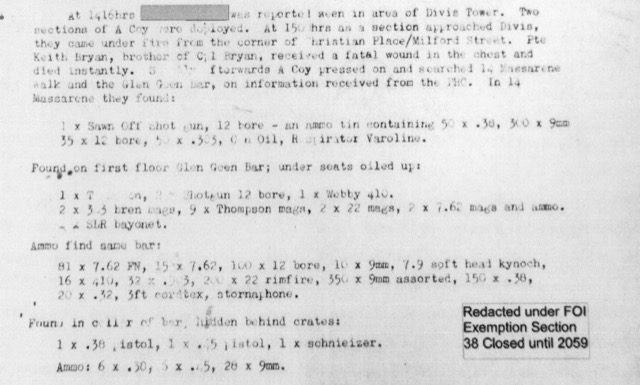When the late Cathleen Knowles, who was Secretary of Sinn Fein until the 1986 split with RSF, asked Rita O’Hare why she was planning to go with the Adams’ leadership after Sinn Fein dropped abstentionism in Dail Eireann and agreed to take seats in Leinster House, Rita’s reply was simple.”Because they’re my people”.
The unspoken truth embedded in that answer is that the Provos were a different sort of IRA than we had ever known. To be sure they paid lip service to the same ideals and goals as did the traditionalists, especially ‘Brits Out’ and the demand for unification; and they believed in the use of armed force. But what really bugged the Provos, what acted as their recruiting sergeants, what made them both powerful and different, were the Unionists and their hard-line cousins, the Loyalists.
The reality of British rule in the North was not the Union Jack fluttering over Dublin Castle but Orange parades strutting their supremacy through Catholic streets, and discrimination in jobs and housing. Most Catholics kept their heads down in these early years of the Northern state and while there was an IRA active in the North, it was careful not to push things too far, knowing that support was conditional in their communities.
These were the years when, in the main, the Catholics voted Nationalist and the IRA was a tiny minority, to be shunned if one wanted to keep a job outside the ghetto. I remember the late Dolours Price telling me that in those days it would be a feat to fill two single-decker buses of supporters to the annual pilgrimage to Wolfe Tone’s grave in Bodenstown. What’s that? Perhaps fifty or seventy-five people. Republicans also tended to marry fellow republicans, evidence of a reluctance on the part of non-republicans to associate too closely.
So the need to defend their areas and then to emasculate Unionism was the real, if unspoken, unacknowledged priority of the people who many years later led and directed the Provisional IRA after August 1969; Brits Out and a 32 County Republic were secondary aims. But that’s also why, fundamentally, we have a peace process and the absorption of the Provos into constitutional politics.
And that’s what Rita O’Hare really meant when she told Cathleen Knowles in 1986 that she was going with her people.
I have to say that I always found Rita good company and a fundamentally decent person, fun to be with. She was also undeniably brave. On one occasion she tried to smuggle a stick of gelignite into Portlaoise jail, apparently to facilitate a jailbreak. There is really only one place a woman can secrete such a thing and hope to get away with it, and that is inside her body. Think about it. Now, you need balls, for that!








You must be logged in to post a comment.